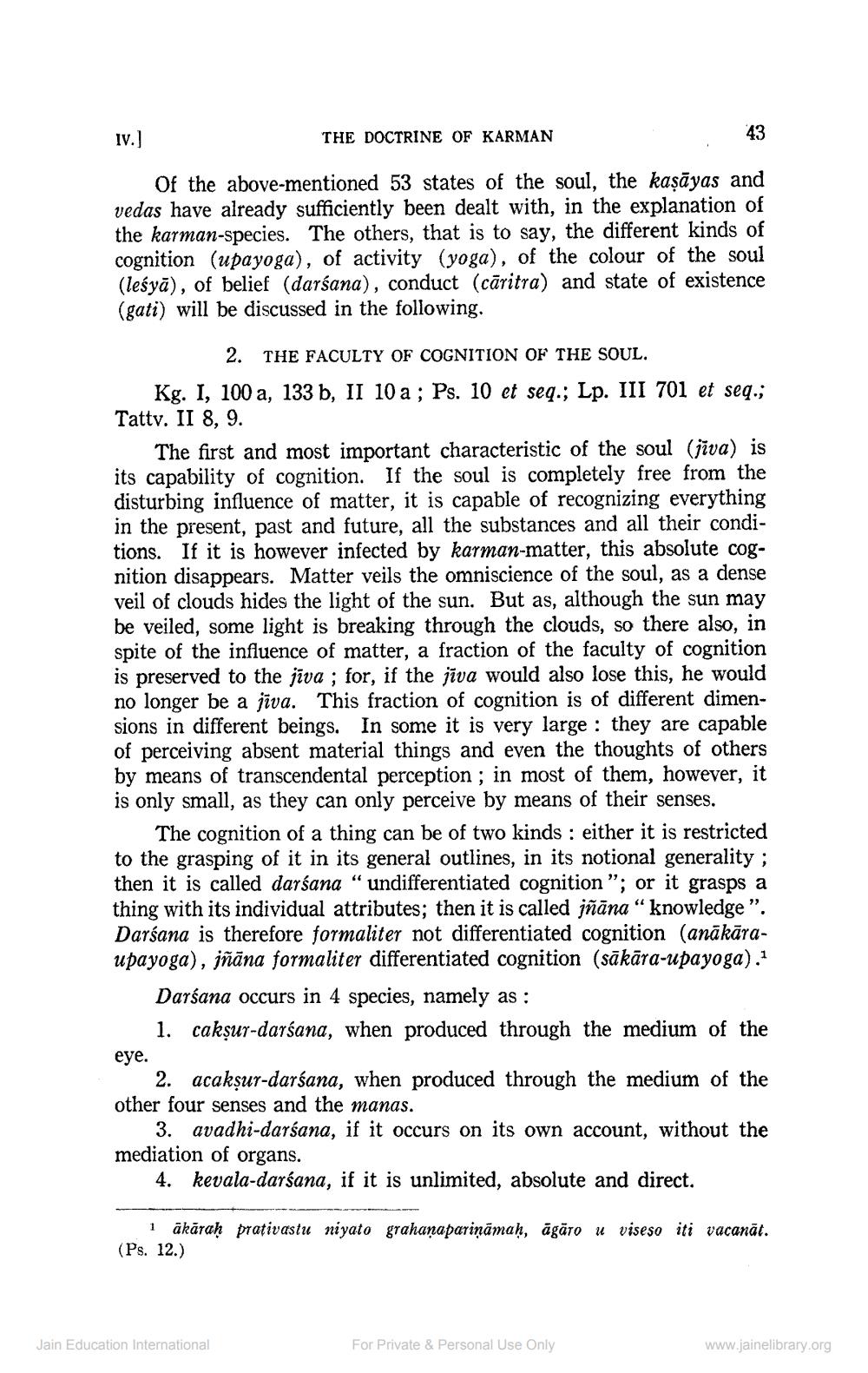________________
iv.)
THE DOCTRINE OF KARMAN
43
Of the above-mentioned 53 states of the soul, the kaṣāyas and vedas have already sufficiently been dealt with, in the explanation of the karman-species. The others, that is to say, the different kinds of cognition (upayoga), of activity (yoga), of the colour of the soul (leśyā), of belief (darśana), conduct (cāritra) and state of existence (gati) will be discussed in the following.
2. THE FACULTY OF COGNITION OF THE SOUL.
Kg. I, 100 a, 133 b, II 10 a ; Ps. 10 et seq.; Lp. III 701 et seq.; Tattv. II 8, 9.
The first and most important characteristic of the soul (jiva) is its capability of cognition. If the soul is completely free from the disturbing influence of matter, it is capable of recognizing everything in the present, past and future, all the substances and all their conditions. If it is however infected by karman-matter, this absolute cognition disappears. Matter veils the omniscience of the soul, as a dense veil of clouds hides the light of the sun. But as, although the sun may be veiled, some light is breaking through the clouds, so there also, in spite of the influence of matter, a fraction of the faculty of cognition is preserved to the jiva ; for, if the jīva would also lose this, he would no longer be a jīva. This fraction of cognition is of different dimensions in different beings. In some it is very large : they are capable of perceiving absent material things and even the thoughts of others by means of transcendental perception ; in most of them, however, it is only small, as they can only perceive by means of their senses.
The cognition of a thing can be of two kinds : either it is restricted to the grasping of it in its general outlines, in its notional generality; then it is called darśana “ undifferentiated cognition "; or it grasps a thing with its individual attributes; then it is called jñāna“ knowledge”. Darśana is therefore formaliter not differentiated cognition (anākāraupayoga), jñāna formaliter differentiated cognition (sākāra-upayoga)."
Darśana occurs in 4 species, namely as :
1. cakşur-darśana, when produced through the medium of the eye.
2. acakşur-darśana, when produced through the medium of the other four senses and the manas.
3. avadhi-darśana, if it occurs on its own account, without the mediation of organs.
4. kevala-darśana, if it is unlimited, absolute and direct.
1ākārah prativastu niyato (Ps. 12.)
grahanapariņāmaḥ, āgāro u viseso iti vacanāt.
Jain Education International
For Private & Personal Use Only
www.jainelibrary.org




